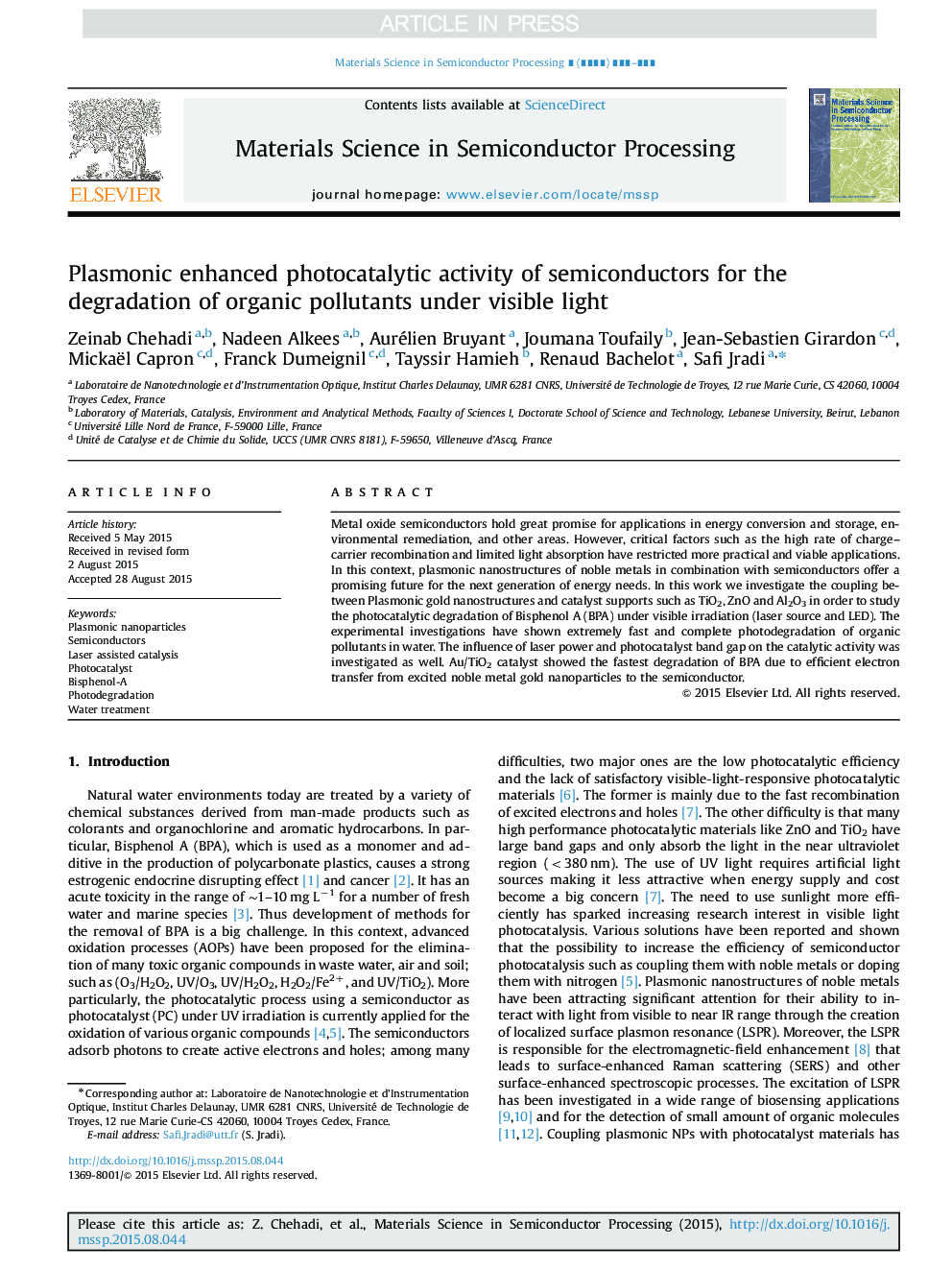| Article ID | Journal | Published Year | Pages | File Type |
|---|---|---|---|---|
| 10407103 | Materials Science in Semiconductor Processing | 2016 | 4 Pages |
Abstract
Metal oxide semiconductors hold great promise for applications in energy conversion and storage, environmental remediation, and other areas. However, critical factors such as the high rate of charge-carrier recombination and limited light absorption have restricted more practical and viable applications. In this context, plasmonic nanostructures of noble metals in combination with semiconductors offer a promising future for the next generation of energy needs. In this work we investigate the coupling between Plasmonic gold nanostructures and catalyst supports such as TiO2, ZnO and Al2O3 in order to study the photocatalytic degradation of Bisphenol A (BPA) under visible irradiation (laser source and LED). The experimental investigations have shown extremely fast and complete photodegradation of organic pollutants in water. The influence of laser power and photocatalyst band gap on the catalytic activity was investigated as well. Au/TiO2 catalyst showed the fastest degradation of BPA due to efficient electron transfer from excited noble metal gold nanoparticles to the semiconductor.
Keywords
Related Topics
Physical Sciences and Engineering
Engineering
Electrical and Electronic Engineering
Authors
Zeinab Chehadi, Nadeen Alkees, Aurélien Bruyant, Joumana Toufaily, Jean-Sebastien Girardon, Mickaël Capron, Franck Dumeignil, Tayssir Hamieh, Renaud Bachelot, Safi Jradi,
